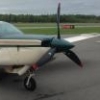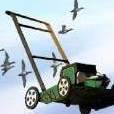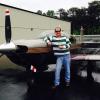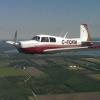Leaderboard
Popular Content
Showing content with the highest reputation on 06/29/2017 in all areas
-
4 points
-
If you think a touch and go is dangerous and asking for a gear up landing, please avoid formation training, you'd either have a midair with another plane in your flight, or stroke out worrying about it. Want to reduce all landing risks? Don't takeoff, you won't have to worry about landing.4 points
-
4 points
-
I originally bought a B-Kool <http://www.b-kool.net> not long after they were first commercially available. It always worked well from the beginning. A few years ago I had it upgraded and Bob told me I must have had one of the first 10 units he made, he could tell by the components as he continually improves his product. Then I found out another upgrade was available, among other things the new upgrade would double the airflow. So I had it done too. I doubt many of the original parts are in my B-Kool anymore. I've owned two airplanes with factory air conditioning, a 1981 Piper Seneca and a 1974 Cessna P337. The Seneca air conditioning was pretty much worthless. It put out a little cool air but with temperatures that hit 47º (Celsius), that didn't put a dent in the heat. The P337 unit was better, almost reasonable but it ran off the rear engine and made the engine run hot so when you needed it most, you couldn't use it. I've been out of town a lot and haven't flown with the upgraded B-Kool unit until today. It was already 37ºC before noon. Today will make the 15th straight day the temperature has been over 105ºF in Tucson. Each time Bob does an upgrade it changes the performance dramatically. Wow ! The current version of the B-Kool is pretty much indistinguishable from modern automobile air conditioning in both volume of air and temperature. The remote to turn it off once at altitude and on again for descent is great too. This is a very well thought out, well researched and well engineered product. Can you make one yourself ? Of course. But I seriously doubt it will be anywhere near this quality or be this "polished" a product. And besides, it isn't worth my time to cobble together a system when someone else has already done all the leg work and offers a superior product for a very reasonable price. 1) If you don't have one of these units, buy one. He has a 30 day money back guarantee if you don't like it. 2) I receive no compensation, financial or otherwise from Bob or B-Kool. I paid full price for the original unit and pay the full upgrade price each time I have mine upgraded.3 points
-
Formation flight in the Mooney Caravan involves formation takeoffs and landings; both operations are safe when done right. Both are done in close proximity to the ground. Many videos have been posted here showing both. TnGs are safe when done right; so are full stop landings. Many accidents happen on landing, just read the NTSB files. I repeat: can we stop the incessant yammering about how unsafe the things we each dont like are? One question was asked about how to do something, and was completely buried by people telling him not to do so, because they are so dangerous . . . While they are demonstrably not. I don't recall the details of my PPL checkride, but my Instrument ride had one of each type: touch and go, missed approach and full stop. The DPE wouldn't have asked if he thought they were dangerous. Can't count how many my airline pilot CFII had me do during training, but it was well into the multiple-dozens. Can we please stop bickering, fighting and insulting??? It appears that no one's mind is being changed. I hope the OP was able to find the answer to his question, buried in all of the noise. Hey, @TheTurtle, send me a PM if you want to discuss TnGs rationally, quietly and without meaningless interruptions.3 points
-
3 points
-
I'm thinking he was trying to pay for a panel upgrade. You know what they say about desperate times...3 points
-
Over 1400 nautical miles flown, another state (Idaho) checked off the list, three new airports visited, met two Mooneyspacers ( @astravierso and @1964-M20E), and the first trip long enough that I had to stop for fuel before reaching my final destination. It was a great Idaho Adventure on Father's Day Weekend. Idaho Adventure Here's video from one leg, there are a bunch more videos, a whole lot of pictures, and the write- up on my website.3 points
-
I've done touch and goes with an M20C and a M20K252 in all possible configurations including full flaps with full up trim and speed brakes deployed. It's a non-event. It helps to be comfortable flying the airplane in all different configurations, not just what's detailed in the POH, though.3 points
-
So, does anybody know how many Mooneys have crashed doing touch and Gos? The accident reports must be littered with them.3 points
-
Graphs and industry data don't support that theory. Not at least for piston planes. Cheap jets never recovered but the high dollar expensive ones have never had it better. Values fell off a cliff in 2006 and stabilized in 2009 according to this article, which seems credible. We bought in 2010 and the prices had just recovered significantly so we wanted to get in before they went higher. That and I had been steadily employed after I lost my job for a year in 2007. The prices didn't go higher, but we're trending strongly https://www.aopa.org/news-and-media/all-news/2013/june/01/used-aircraft-values-still-dropping3 points
-
Because that's the standard CFI question while training in a Cessna, where split flaps apparently happen sometimes. Maybe they have separate motors for each Fowler flap? Besides, I think he's grasping at straws to justify his own preference to not do TnGs. Like the insurance question he asked. Yes, every insurance company would like to insure pilots who always do everything properly and in accordance with their checklists, but both of those pilots are already insured. The good news: you are PIC of your plane, and I am PIC of my plane.. Weather and winds withstanding, you don't have to do anything you don't want to. But just because you don't want to doesn't mean that I shouldn't, and just because I want to doesn't mean that you should. Touch n Goes remains a valid exercise, and a good maneuver. Do it or not, it's your choice.3 points
-
We replaced the harness wires, problem solved. After he took the originals off, he load tested them all, they still tested fine. Then he tested ohms and found both R and L wires going to the #1 cylinder was not grounding properly. He could move the end around and get intermittent ground, un-ground. That is why when I got a mag taken on or off temporarily the problem went away. On the L mag, the radio is now 100% crystal clear. On the R mag, the radio receives strong transmissions (within 20 miles) crystal clear. Weaker transmissions I can still hear a tiny bit of rpm static about 10% of what I had. It is completely tolerable and I might not have even thought much about it if I want hyper sensitive to it now. If it never changes beyond what I have now I am satisfied. Any body know would could make it show up faintly receiving a weaker transmission on just the R mag only?3 points
-
Touch and goes IMO have one valid use, to save time. When you're practicing landings at a very busy airport they can be used to save a LOT of time. The caveat is that you need to make it a point to do them carefully and be aware of potential dangers. My home airport can get really busy, and when I was training we did a lot of full stop taxi backs. Sometimes this meant landing the plane once, then sitting in a line for 20 minutes. That means at best I'd get 4 landings in during my hour of instruction time. Doing TnGs you can get that same number in under 30minutes easily. Yes, people get rushed and screw them up. People have pulled the gear handle instead of the flap handle. This is why it's important to not rush things. Like I said in my previous post, treat it like a regular landing, slow to a stable speed, reconfigure, then go. If the runway is long you have plenty of time to do this safely. Another thing many forget about is that "cleared for the option" includes stop and go as an option. Land, stop, reconfigure, take off. Skip the long line at the hold short bars. Now that I own the plane, have lots of time in it, and am not staring at the hobbs I have little use for touch and goes, but when you're paying over $2 a minute for a rental, they can be quite valuable.2 points
-
You really aren't getting this. No-one is deathly afraid of T&G's. Steingar fears nothing. But, why practice a maneuver that can easily prang airplane and possibly pilot that has no real functional value? Just because? That's the only reason I'm really getting out of this thread. Because the airplane can do it, we should. I consider this utterly ridiculous. I promise the airplane can do 1G loops and rolls. Mooneys are built stout. Does that mean everyone should go out and do aerobatics in their Mooney? Formation flight, in addition to being lots of fun, has a purpose. It is truly a wonderful thing to learn. That said, it does not take place close to the ground, and does not involve rapid changes in power and settings. That said, it is quite dangerous if done incorrectly, and shouldn't be attempted without specialized training. T&G's done right aren't dangerous in the slightest. Done wrong they can be catastrophic, especially in complex aircraft where things happen quickly. Of course, the wisest pos tin this thread said that we're all owners and should do what we please with our aircraft. That is a sentiment with which I can wholeheartedly agree.2 points
-
That happened to me - several times! I was flying to and from Grand Turk in the British West Indies, and I was always worried that someone would put drugs into my airplane via an inspection port. I purposely lined up all the fasteners on the inspection plate in the tail cone as I heard that it was the "favored" location to introduce drugs. Sure enough, when I returned to my airplane it was apparent that the plate had been removed, and then placed back. Probing about with a flashlight I found some sort of tracking devise, with an antenna, wired into the rear navigation light. I carefully removed it, placed it on the tarmac, and stomped the hell out of it. This happened again the next time I flew to Grand Turk, and I again removed the tracker, and stomped on it before flying back to the US. On my next flight to Grand Turk I wandered into a couple of bars until I found a guy wearing a white shirt and tie, with short cropped hair. Hardly the usual casual tropical attire. I sat down next to him and asked him point blank if he was DEAi. He wanted to know why, and I told him I was the owner/pilot of a Mooney out at the airport, and I was damn tired of removing his tracker. He, in turn, told me that I was destroying government property. I told him he had no jurisdiction in Grand Turk, and after he and I had some heated argument, I explained to him why I was in Grand Turk, and that he should check with the Turks and Caicos British governor as to why I was an invited guest. After that everything calmed down, and no more trackers (at least none I could find), and I would stop by the bar and buy him a drink each trip. Sent from my iPhone using Tapatalk2 points
-
This is good advice. The MAPA PPP does not do touch and goes. At my first one, though, my instructor was working with me a month after my transition training (and I hit 100 hours total time enroute to the PPP), and one landing he challenged me to land on the mains, keep the nose wheel in the air and take off again. I did, and it was fun! Probably the most TnGs I did was with my CFII during instrument training. I didn't question the decision, I grew up watching a variety of jets and propellor planes doing them (F4, A4, A6, AV8A, C130, C141, etc. Can't swear about the sea planes, their landing zone was pretty far out, but I did stay out of their way in the sailboat . . . ) I was surprised that the PPP doesn't do them, but the first hint I had that they are "dangerous" was here, a couple of years ago. I retract my flaps with one finger, while holding the throttle to idle; grabbing the gear means letting go of the throttle and moving my arm, and I do that just like on every takeoff-- after achieving rotation speed, pulling the yoke back and verifying positive rate of climb. Just like on every takeoff, my right hand stays on the throttle until time to raise the gear. Just like on every landing, I raise the flaps with throttle to idle, and don't mess with anything else. If you don't like them, don't do them, but stop the incessant the yammering, telling everyone that they aren't safe and should never be done!! P.S.--the horse is dead . . . .2 points
-
Talked to Sam on the phone, seems to be a straight shooter! His prices are good and even had some good advice on shipping!2 points
-
That @1964-M20E sure gets around, using his Mooney as it was intended to be used. I first met him on the ramp at I19 in Fairborn OH and have seen him at Mooney Summit and Sun-N-Fun. Go John!2 points
-
Took it up for a 2 hour shake down post maintenance flight today with @"Chocks". Flying Austin to Minneapolis tomorrow. I'm glad we were able to flush mount everything including the G5. There are still a few squawks, but it goes in for Annual on August 1st. I'm going to put as many hours on it as possible between now and then. The pard of the panel not yet done is the right side with the holes covered and the breakers. That will all get redone in August. I'm also still waiting on back order Kalixon switches from Mooney so a few are non-standard right now.2 points
-
Yep. And they ain't easy to find. It'll go with my cranberry Mooney shirt.2 points
-
2 points
-
Hank, sorry, but that is not correct. There are many things you can blame Obama for, but airplane values dropping after the economy started crashing in 2007 is not one of them.2 points
-
I rarely do touch and goes, but since I almost never use flaps for takeoff it's a pretty simple affair. Treat it like any other landing, and use all the same setting I normally would. After landing retract flaps, apply power and perform a normal take off. The key is not to rush it. I only do them at my home airport with 5000' of runway, so I can land get totally stable and take my time reconfiguring.2 points
-
HI Ned, My goal is to complete Matt's F , Marauders F, and Bob's E this year. I am working on the parts for the pre 66. I just purchased another upper cowling to use for my mold on the older birds. I'm going to have to replace the upper cowling on the old birds. Thanks, David2 points
-
With 12k you will have plenty of runway to work with and I'm guessing at that length it is nice and wide so the odds of you drifting too close to the edge are very slim. Just take your time, you will have plenty of it. Make sure you are tracking right down the center-line before adjusting trim if you choose to do that before advancing the throttle. Although as some others said even if you have full up trim you shouldn't have a problem holding enough pressure forward to keep from pitching up and stalling at the slower speed that you will be taking off at compared to a go around. What if your flaps don't come up when you are performing a regular take off? What if your flaps get split on the way up when you are performing a regular take off? Is there a greater chance of that happening on a touch-n-go than if you land, taxi back, and take off again? The couple of times I have had to go around I have found that it is more complicated and involved than a touch-n-go but I don't hear the same arguments against practicing those. On a go around I'm going faster so the addition of power with full up trim is much more noticeable than when I am rolling along at 50-60mph and add power on a touch-n-go. On a go around I am stopping my descent and beginning a climb without the benefit of having performed a landing first, all while still retracting flaps, adjusting trim, and retracting gear. Figuring all of that out is exactly what has to happen between 5-100' off the ground when performing a go around, but again I don't hear people making the same arguments against practicing go arounds as they do against practicing touch-n-go's. For having the name "Complex" I have found that my plane really isn't that complex.2 points
-
That's why trainers are used for training. Make the mistakes in a very forgiving airplane that someone else owns and maintains. If the insurance company would even consider covering someone doing initial training in a complex, retractable, turbo charged airplane the cost is going to be exorbitant. If you bring it in gear up or do a prop strike with low hours then the insurance goes from exorbitant or either astronomical or unobtainable. 25 hours into my training 32 years ago I bought a Cessna 172 to finish up my training in. I flew it 500 hours in 3-1/2 yrs. It had no autopilot so I learned to hold altitude and heading. I sold it for $5000 more than I paid for it. I had a Grumman Tiger that I flew 100 hours in for a year and broke even on. Then I bought a 172RG to build up retractable time, again no autopilot, not much faster than a 172. I flew it 100 hours in 15 months and got $15000 more than I paid for it on trade for a 10 year old Mooney 231. Still after 600 hours total time in Cessnas and a Grumman, I was way behind the 231 for the first few months I owned it. I kept that for three years, got my Instrument Rating in it, put a little over 400 hours on it, got all my money back out of it and bought a Bravo. Was I ready for a Bravo at that point? Not really, but Mooney provided Flight Safety Training at the time and I flew it a lot over the next few years and I became very comfortable with it. Looking back, I can't even imagine starting out in the Bravo. It happens all the time though where people who have some money buy an airplane they aren't ready for - people who sell airplanes say that those people have more dollars than sense. They aren't used to being told no. They think instruments and automation will make up for their lack of training and experience - actually it's just the opposite. Then way too often you end up reading about them in NTSB reports after they have killed themselves and their families after spinning it into the ground. (This is an extreme example, but still supports the idea of "just because you can, doesn't mean you should": http://www.newsmax.com/TheWire/lake-erie-crash-pilot-rookie/2017/01/20/id/769591/)2 points
-
I would have to say learning to fly in the bravo vs a 172 will not be the same learning curve. While you are looking at bravos go rent a 172 and fly as often as you can.2 points
-
A lot of time for who? What about the corporate jet or any other normal flight holding short burning tons of fuel while waiting for a 65 knot plane 3 miles out to land and clear only to see them touch and go and then hog up the departure path......and sometimes another right behind...... its all about me................1 point
-
I'm really not complaining, plan on keeping it till I'm done flying. But with the improvement in the economy and strengthening of the markets it really tells you that there are other market forces at work that we have all discussed ad nauseoum such as less pilots and changing tastes in aircraft, to name a few. I read recently that Cirrus had either 400 or 600 orders, can't remember which, for their new jet at about 2mm per copy. Looks like there are still pilots out there with some disposable income!1 point
-
What exactly do T&G's have to do with formation flight? I've done a bunch, and we certainly didn't do T&G's. I'd like to think that the flight leader could identify a hazard before it go to that stage. Rapidly changing flight regimens is a really bad idea for formation novices.1 point
-
No! I could not find a single mention of touch n goes in the PPL ACS. https://www.faa.gov/training_testing/testing/acs/media/private_airplane_acs_6A.pdf No! No! What would be the point of going out and practicing a useless maneuver with an instructor that you intentionally choose to avoid in order to reduce risk? I don't think anyone is saying they don't know how to do touch n goes or are incapable of doing them. They are just saying that they have identified an elevated risk in performing such a maneuver and realizing the lack of positive value from its implementation, they found it prudent to avoid practicing it.1 point
-
Touch and goes are good practice for when you bounce a landing. Shove everything foreward. Trim. Level flight, flaps,side step, radio, clean up, climb Good to have muscle memory1 point
-
Why not just order a new one and install it? Your problem could be over two days from now and you wouldn't have to worry about the DPE. The list you're talking about would be an approved Minimum Equipment List (MEL) and gets approved by the FAA for your specific airplane. It's easier to just replace the broken piece. Call some of the bigger shops (LASAR, Don Maxwell, Dugosh) and order a new one. They will probably know which one you need just based on your year and model- and they may even have not changed in 50 years. Good luck on your checkride.1 point
-
1 point
-
Considered adding 100 extra miles and doing 3 countries (Canada, USA and Mexico) but 1334nm is plenty for one day1 point
-
1 point
-
1 point
-
1 point
-
I did a lot of T&Gs during transition training. Even when out of trim it was a non event, you are going slow enough that you can maintain control with 1 arm, trim with your thumb and control throttle if needed (back off a bit until trimmed). With out electric: trim, flaps and gear...it's probably more of an athletic exercise. This was on a 5500' runway, 150hr pilot, it's a skill I needed when I bounced a few landings afterwards.1 point
-
@gsxrpilot, Since my plane is going to be on the cover of your book showing what not to do yours can be on the back showing a finished product. Fair is Fair Nice panel layout1 point
-
Thanks all for your replies. DVA has offered to sponsor the event through his business. I am working out the details and will let you know how it turns-out. Here is the current list of attendies so far: yvesg + 1 Ned Gravel + 1 Bob_Belville + 1 DVA Amillet KSMooniac + 1 kpaul + 1 JohnB + 1 BDPetersen Sabremech Marcopolo + 1 MooneyMitch Oscar Avalle 20 people already!1 point
-
If you absolutely have to get into and out of Oshkosh on a tight schedule then just skip the trip or land elsewhere. There are hundreds of airplanes looking to get in and out the whole time the field is operating. While it isn't that big a deal, you do have to bring your A game and be able to land where they tell you. If you land at 100 mph and take up 4000 feet every time then Oshkosh just isn't for you. But, if you're a pilot and can fly and land your airplane at set speeds and distances, if you can stomach flying around other aircraft, and if you can handle a few distractions without dropping out of the sky, Oshkosh is the most fun you will ever have in your life. You will land an taxi with everything from hot experimentals to WWII Fighters. You will see just about every kind of aircraft every made by anyone. You can look for anything airplane related, and see what the new airplanes look like inside and out. You can ever take a ride in one of those experimentals and see if its for you. You will share a giant festival with 10,000 of your fellow pilots. But if you aren't pilot, if your aircraft tis just a tool and not a passion, then just stay home.1 point
-
have so many times but looking forward to installing an AOA so I can do on base to final1 point
-
For us simple minded folks, I think Wolfgang Langeweische said it best in Stick and Rudder . A wing goes up by pushing air down; much like a water ski rides on top of the water, rather than sinking.1 point
-
Hahaha. I have no experience yet. But my brother does and I am going to do nothing but learn from here on. We decided to go with a 1979 piper arrow IV t-tail. We are gonna learn on that and then get a beautiful mooney once we get our bearings1 point
-
After determining the degrading Tygon tubing in my standby vacuum system was the problem, I replaced it with Aeroquip 306 (MIL-H-5593) due to concerns of damaging another vacuum pump. Now I am really glad that I did. The old tubing showed evidence of its oil or plasticiser attacking other plastic pieces that it was in contact with. Surely the long term effects of being in contact with wiring insulation would not be healthy. See the attached photo with the imprint of a tyrap on the Tygon hose. I have learned a lot since my first post. IMHO, Tygon tubing in this service should be inspected on a regular basis and replaced at the first sign of degradation. The replacement wasn't as difficult as I originally thought. I removed the pilot's seat , glare shield, baggage compartment side panel, and all the lower side panels. I joined the hoses together with a short piece of 1/2" wood dowel and a couple of screws. Pulled the old hose from the front and feed the new hose in from the rear. Snaking the new hose in place was the easiest part of the job. I spent more time removing and installing panels. If I had to do it again, the pilot's seat and lower side panels would stay in place. The two tricky spots for snaking the hose in place can be accessed from the baggage area. Bill1 point
-
1 point
-
I dunno . . . . Maybe building an airplane? Or flying one that I built!1 point
-
Naw! Putting a pile of Mooneys on the runway, 2 at a time, with 39 of your bestest friends - that is the way to go to AirVenture. Five minutes from Mooney Lead touchdown to Mooney Tail touchdown. Safest way to arrive. If you don't believe me, ask Princess Buttercup. She can tell you all about the diamond lane. Million times more sane than the Fisk arrival. And getting out? Dawn patrol style. 201er, Rocket, and us. Three ship on 27. Here is Mike (201er) leading at 10,000' crossing the eastern edge of Lake Michigan. Paul (Rocket) is in the number 2 slot.1 point

























.thumb.png.7c67574d7b28f67b0b4a17760919b1ac.png)




